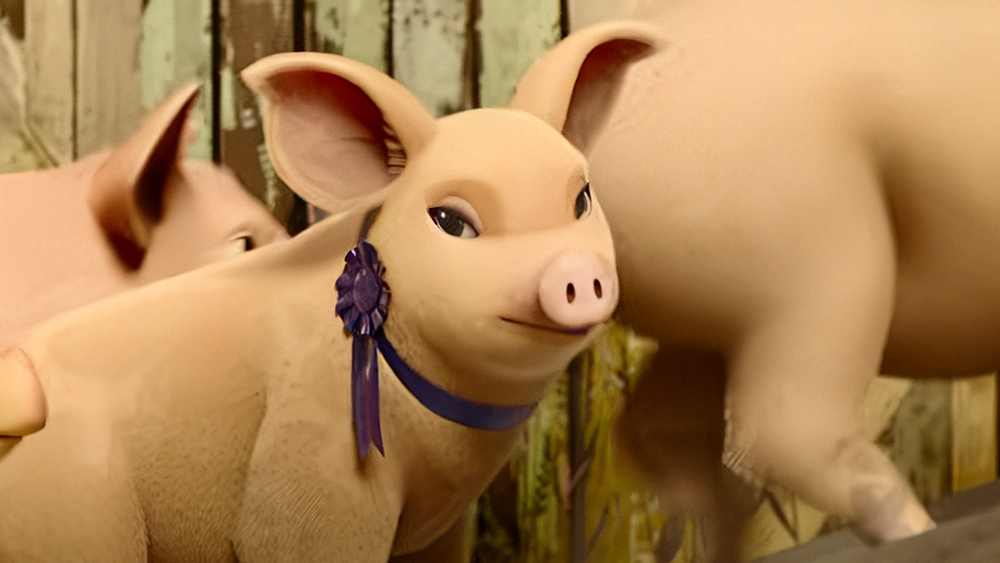24 hours with Jonathan Barnbrook
Garrick Webster dives into the mind of the VirusFonts and Barnbrook studio founder, for a day considering politics, psychology and the odd bit of design inspiration too
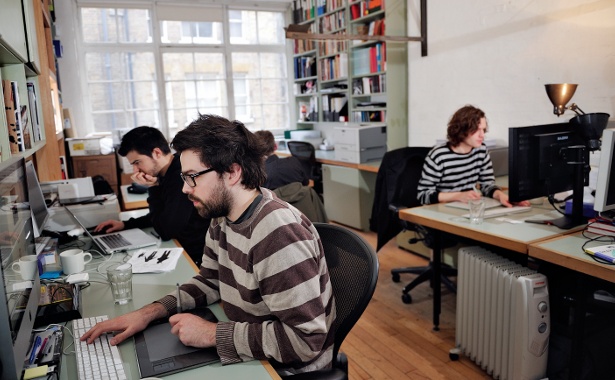
“Luckily they voted for our logo, and it’s a great honour because we absolutely believe in what they are doing. There are various problems with the capitalist system and the financial system, and many people will not concede that it can’t go on. Some people have to take a stand, and they’re the people who’ve camped out in tents night after night in the freezing cold,” says Barnbrook.
Far from being downbeat about Europe’s financial crisis, he sees it as an opportunity for change. “[The protests] are getting bigger. In London, they took over a UBS building and called it the Bank of Ideas. Radiohead did a secret concert there to raise funds. Often the press will try to make them seem like a load of crusties or something like that, but really they’re people who are disaffected with the current situation. They’re people from all walks of life. It’s pretty obvious something like this has got to happen because those models that we relied on before were just creating poverty and disadvantage, and it’s getting worse.”

Politics has long been part of Barnbrook’s work. In the 1990s, he designed and art directed for AdBusters, the magazine that lifts the lid on corporate misuse of design. AdBusters kicked off the Occupy Wall Street demonstration in summer 2011, which went global quicker than a new energy drink. If you look Barnbrook up on Wikipedia, you’ll see his 2001 poster ‘Designers, stay away from corporations that want you to lie for them.’ It’s a quote from Tibor Kalman.
How much can designers help a cause like the Occupy movement? “You find the correct voice for people. Not that we’re arrogant enough to think we know it, but hopefully the logo we’ve done shows the immediacy of what they’re doing quite simply. I feel we should be doing a bit more, actually.”
Although he’ll work for causes he believes in whenever possible, Barnbrook is philosophical – even sceptical – about how much one designer can affect things. He gives talks at events around the world, and lectures in colleges and universities, and is often asked about this aspect.
“It’s ridiculous to talk about how graphic design can change things. The thing that people always ask me at lectures is: ‘Have you done a piece of work that’s changed anything?’ And of course I say no immediately because people don’t look at a poster and go, ‘Oh well, I’ll just change my point of view, let’s change society.’
“It’s a trickle effect and you’re one small voice among many. That’s how all change happens. A view when it’s first proclaimed is seen as heresy, and then it gains a bit of currency and that becomes seen as some kind of violent intervention in society, with demonstrations and so on. Then it gets accepted if it’s a good idea, and if it’s a humanitarian idea. I’m part of it. I don’t control it.”

Away from the studio, Barnbrook reads a lot. Not surprisingly, he’s read a lot of books on politics, but he’s recently shifted towards ancient philosophy – Marcus Aurelius and Plato, for instance. This has fed into his design outlook. He wants to put something spiritual into his work, to give it some positive energy and perhaps even a utopian feel. It’s made him think more carefully when it comes to political messages.
“I try to put hope into the work. If we’re doing something political there should be a positive message in there, not just a negative one. Not just complaining. I think it’s important in a world full of negative energy and news to try to be positive in some way,” he shrugs.
And he’s optimistic about what’s happening out there now. “I don’t think times are more depressing. Times are incredible,” he says. “I’m very positive. I don’t like the system that we have at the moment. I don’t think it’s particularly fair but it has to come from the people to create something better. That sounds vague, but I do believe that we’re seeing the end of the market economy and capitalism. It may take a few more major disasters, but it’s on its way out.”
It seems fitting that someone who designs typefaces is so into reading, and his studio is a bit like a library. There are editions of his own work, of course. This includes The Barnbrook Bible and his collaboration with Damien Hirst – he worked on the design, layout and type of the artist’s 2006 hardback I Want To Spend The Rest Of My Life Everywhere, With Everyone, One To One, Always, Forever, Now. Both titles were published by Booth-Clibborn Editions.
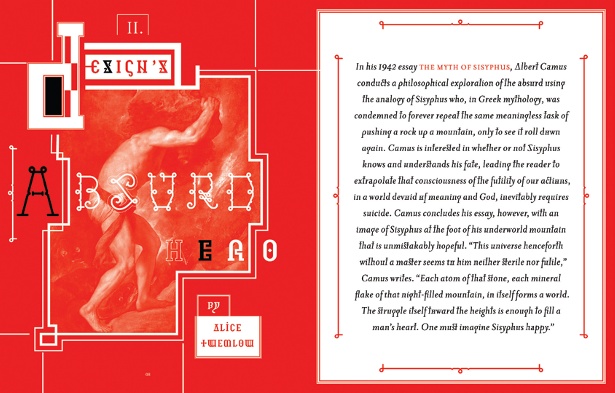
Then there’s a whole collection he keeps for inspiration. These are as varied as Logo A Lot, Tibor Kalman books and An Idiot’s Guide to Understanding Islam. There are original 1930s first printings of the Jeeves books by PG Woodhouse, and all kinds of books in Japanese, Cyrillic and other scripts. When he was young one of the first books to motivate him was Steppenwolf by Hermann Hesse. The conflict between the instinctive and intellectual sides of the main character resonated with him, and he created his first bits of typography rewriting quotes from the book.
“Recently it’s been JG Ballard, which is a graphic design clich, but he’s a classic writer, particularly Atrocity Exhibition, which is even more of a graphic design clich,” he says. “Every single page could be a visual design project that lasts the rest of your life.”
Barnbrook’s girlfriend is studying psychotherapy, so he’s been reading about that too. It’s something he finds useful when he thinks about work. Understanding the mentality of clients, and the end users of the design, is something he can tap into. It also helps him teach. Teaching sessions, he observes, are often thinly veiled counselling sessions.
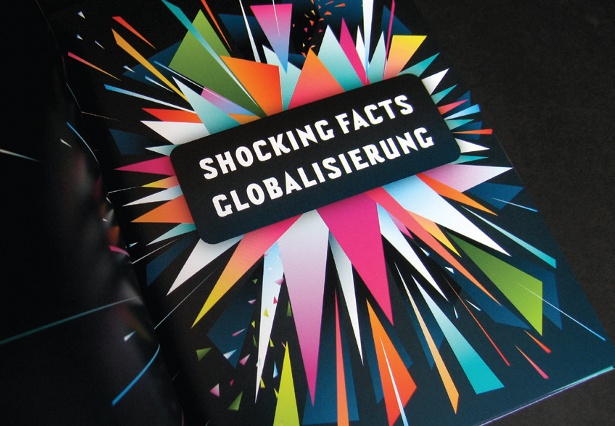
“What I worry about with some students is that they are in difficult circumstances at the moment,” he says. “There are so many graduates, and the way they try to solve it is by being more commercial, and that’s not the way to approach it. You have to have a bit of courage, and of course it’s difficult when you’ve got no money and you’re having to pay your fees. It’s more important to be happy and poor than to be unhappy and rich. Even when I’m saying it, I know how difficult it is, but you have to have courage in your own belief about what design you want to do.”
He continues: “I think we have to think much less in terms of commercialism in graphic design. People say it’s much easier for me, but I didn’t have any career plan. Stuff happened. That’s the way it is. If you’re doing something you don’t want to do then it’s more likely you’ll carry on doing something you don’t want to do.”
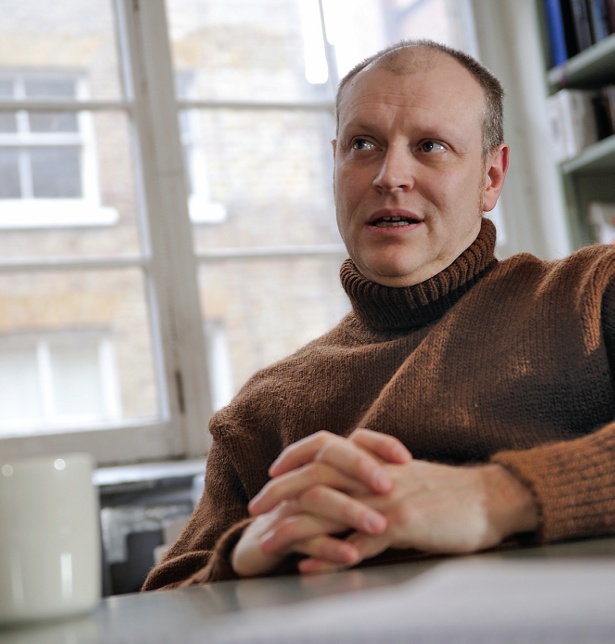
Daily design news, reviews, how-tos and more, as picked by the editors.

The Creative Bloq team is made up of a group of art and design enthusiasts, and has changed and evolved since Creative Bloq began back in 2012. The current website team consists of eight full-time members of staff: Editor Georgia Coggan, Deputy Editor Rosie Hilder, Ecommerce Editor Beren Neale, Senior News Editor Daniel Piper, Editor, Digital Art and 3D Ian Dean, Tech Reviews Editor Erlingur Einarsson, Ecommerce Writer Beth Nicholls and Staff Writer Natalie Fear, as well as a roster of freelancers from around the world. The ImagineFX magazine team also pitch in, ensuring that content from leading digital art publication ImagineFX is represented on Creative Bloq.
